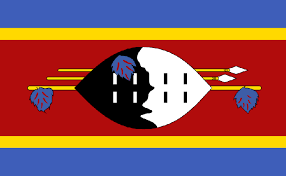Language/Swati/Vocabulary/Colors
Hi Swati learners! 😊
In this lesson, we will learn the Swati vocabulary for colors. Swati is a vibrant and colorful language, and knowing the colors will help you describe the world around you more vividly. We will also explore some interesting cultural facts related to colors in Swati.
With the completion of this lesson, consider investigating these related pages: Fruits, Say Hello and Greetings in Swati, Animals & Food.
Basic Colors[edit | edit source]
Let's start with the basic colors:
| Swati | Pronunciation | English |
|---|---|---|
| lihlo | ˈli:ɬɔ | Red |
| luhlaza | luɬaːza | Blue |
| lentjisi | ɬɛntʃisi | Green |
| lilam | ˈliːlam | Purple |
| libomvu | libɔmbu | Pink |
| limhlophe | lim̩ɬɔpʰɛ | White |
| lubomvu | lubɔmbu | Black |
| lunomkhohlisi | lunɔɱkʰɔɬisi | Orange |
| lunomthubi | lunɔm̩tʰubi | Yellow |
Note that Swati has some interesting compound words for specific shades of colors. For example:
- tsanwitsa means "light blue"
- vavangulu means "dark green"
- nyuvesi means "sky blue"
These compound words can come in handy when you want to be more precise with your colors.
Colors in Swati Culture[edit | edit source]
Colors play an important role in Swati culture. Each color has its own symbolic meaning, and is associated with different emotions and events. Here are some examples:
- Red (lihlo) is a popular color for traditional Swati attire, particularly for weddings and other celebrations. It symbolizes love, passion, and joy. Red is also the color of the Swati flag.
- White (limhlophe) is associated with purity, innocence, and peace. It is also the color of mourning, and is worn at funerals.
- Black (lubomvu) is a powerful color that represents strength, sophistication, and formality. It is commonly worn in formal settings and business environments.
- Green (lentjisi) is the color of nature, growth, and life. It is also associated with wealth and prosperity.
- Yellow (lunomthubi) is the color of the sun, and symbolizes optimism, happiness, and hope. It is often worn at ceremonies and festivals.
- Blue (luhlaza) represents calmness, tranquility, and spirituality. It is also associated with royalty and nobility.
Swati people also use colors to communicate non-verbally. For example, if someone is wearing a red dress, it may signal that they are feeling festive and happy. Similarly, if someone is wearing black, it may suggest that they are in a serious mood.
Dialogue[edit | edit source]
This dialogue will help you practice the colors in context:
- Person 1: Kubonakala kahle ehhansi? (Do you like this dress?)
- Person 2: Yebo, kubonakala kahle kakhulu. Lili lami lihlo. (Yes, it looks very nice. My favorite color is red.)
Conclusion[edit | edit source]
That's it for our lesson on colors in Swati! Remember to practice and use the colors in context, by describing the objects and people around you using Swati vocabulary. To improve your Swati Vocabulary, you can also use the Polyglot Club website. Find native speakers and ask them any questions!
➡ If you have any questions, please ask them in the comments section below.
➡ Feel free to edit this wiki page if you think it can be improved. 😎
__SEO__
Having concluded this lesson, consider checking out these related pages: Clothes, Health, Count to 10 & Greetings.
Other Lessons[edit | edit source]
- How to Say Hello and Greetings
- Fruits
- Greetings
- Animals
- Drinks
- Education
- Clothes
- Feelings and Emotions
- Food
Sources[edit | edit source]

